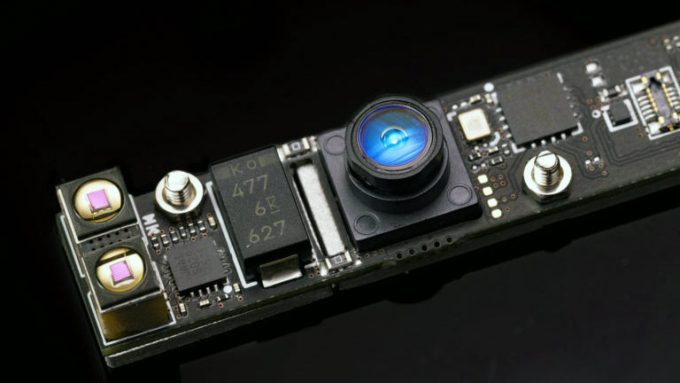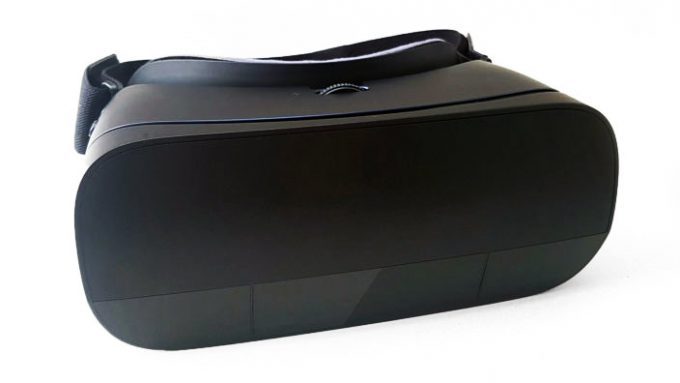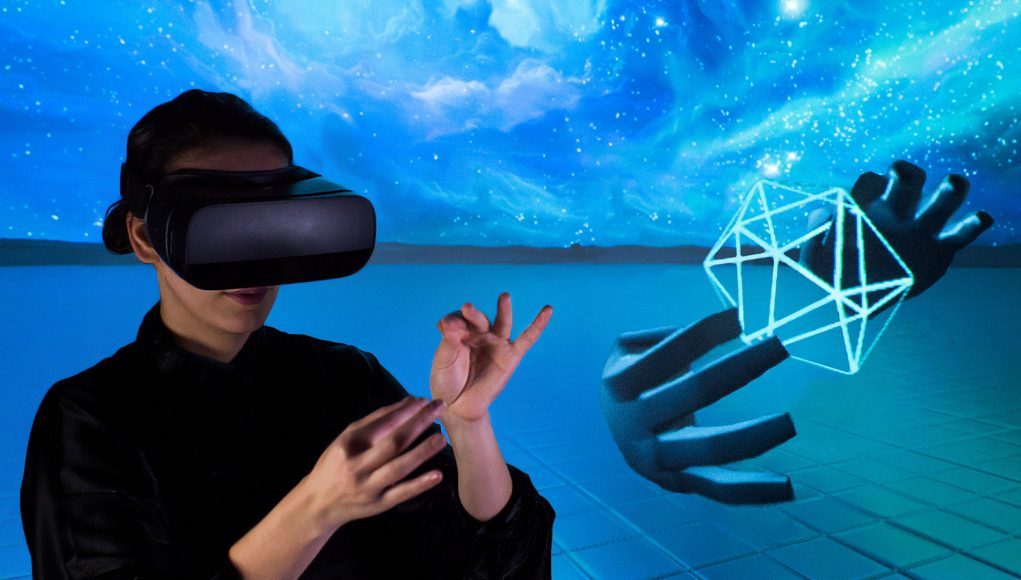The new Leap Motion Mobile Platform consists of hardware and software optimised for VR and AR hand tracking on mobile devices. Building on the success of the original Leap Motion device, the brand new hardware aims to be tightly integrated into future mobile VR headsets.
Designed as a natural motion interface for PC and Mac, the original Leap Motion Controller began shipping in volume in July 2013, for $80. This attractive price was largely achieved by a breakthrough in software; the hardware itself was fairly simple, containing two cameras and three infrared LEDs. Early hand tracking applications which interfaced with traditional displays seemed somewhat abstract, but the compact dimensions and light weight meant that Leap Motion Controllers soon found themselves attached to the front of Oculus Rift development kits. This allowed users to finally ‘see’ their hands in VR, with fully-tracked fingers, marking the beginning of a fruitful relationship between Leap Motion and VR.
Since then, Leap Motion has improved their VR support significantly, and the importance of software was further illustrated by the huge jump in technology delivered by ‘Project Orion’ which began as a major software update in February designed specifically for VR. While still using the original hardware, Orion delivered massive improvements to tracking speed and accuracy. However, the Leap Motion Controller’s hardware was finalised in 2012, and we’ve been waiting patiently for the second phase of Orion, a brand new tracking system designed for VR and built in to headsets.
 That day is almost here, with Leap Motion’s chief technology officer David Holz revealing the Leap Motion Mobile Platform on the company’s blog. The improvements address the field of view, the ‘biggest request from the VR community’; the brand new sensor, which is designed for low-power mobile devices, delivers a 180×180 degree field of view—up from 140×120 degrees on the original Leap Motion Controller—and is said to run at 10 times the speed of the original hardware while using “much lower power”. The increased field of view means the user’s hands can continue to be tracked even when held in a more natural location rather than directly front of them, a major pain point for VR use with the original device.
That day is almost here, with Leap Motion’s chief technology officer David Holz revealing the Leap Motion Mobile Platform on the company’s blog. The improvements address the field of view, the ‘biggest request from the VR community’; the brand new sensor, which is designed for low-power mobile devices, delivers a 180×180 degree field of view—up from 140×120 degrees on the original Leap Motion Controller—and is said to run at 10 times the speed of the original hardware while using “much lower power”. The increased field of view means the user’s hands can continue to be tracked even when held in a more natural location rather than directly front of them, a major pain point for VR use with the original device.
As clarified in an answer in the blog’s comments, this is intended to be embedded technology, and the company has no plans for a new standalone peripheral. No further information was provided in terms of timeframe or pricing, but the company says we can expect to see Leap Motion technology in multiple mobile headsets in the near future.
 Holz said in the announcement that the company has created a reference platform using the new Leap Motion Mobile Platform that’s built on the Gear VR headset. The plans to demo the reference device at upcoming events starting this month.
Holz said in the announcement that the company has created a reference platform using the new Leap Motion Mobile Platform that’s built on the Gear VR headset. The plans to demo the reference device at upcoming events starting this month.







